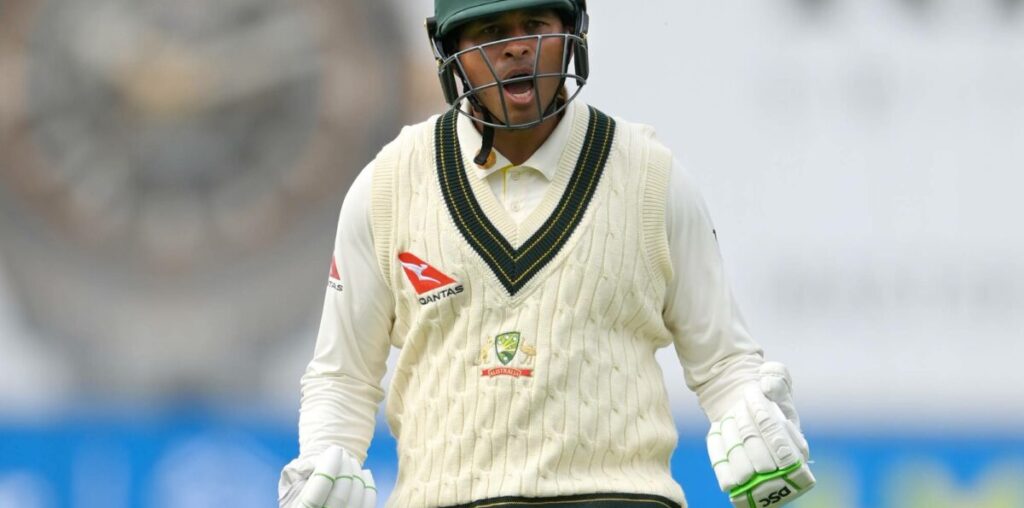If anyone deserves to finish their Test career on their own terms it’s Usman Khawaja.
But there is no room for sentiment in international cricket, or at least there shouldn’t be when it comes to an established star getting to pick and choose when they retire if they are not performing to their usual standards.
Khawaja has had a front-row seat to the circus that was his childhood mate and opening partner David Warner’s last two years in international cricket when his place in the team was debated ad nauseum through a protracted slump.
One year younger, Khawaja turns 38 next month and while he has been tightlipped about his plans, it is believed he is hoping to say goodbye to Test cricket at the end of next year’s Ashes summer which would mean a farewell at his original home ground of the SCG.
The ICC Test player of the Year 12 months ago when he peeled off 1210 runs at 52.6 in 13 matches, including three tons, his form has dipped since then.
In 2024 he has tallied just 274 runs at 30.44 with a solitary half-century from 10 trips to the crease.
His dip in runs have coincided with Steve Smith, Marnus Labuschagne and Travis Head having similar struggles in the same period.
It’s not a drop-off that warrants question about his spot in the team yet but it’s enough to cast doubt around whether Khawaja can silence his critics one more time to return to form in the Border-Gavaskar Trophy series when it gets under way in Perth next Friday.
From there, the Aussies have a relatively light Test schedule in 2025 but a monumental one nonetheless.
They have a two-Test tour of Sri Lanka on the horizon and as the top-ranked team heading into the final stretch of matches, they will likely be defending their title at the World Test Championship final at Lord’s in June.
Then all energies will be focused on retaining the Ashes on home soil against a rejuvenated England who think their Bazball style will be a better bet Down Under than the more conservative touring squads who have failed to win a match in Australia in their past three tours.
Khawaja has more than paid his dues at Test level after spending a decade in and out of the team, due to a combination of his own patchy form on occasions, trigger-happy selectors and an inability to settle into a role.
His triumphant return in the twilight of his career came via twin tons in the Sydney Ashes Test at the start of 2022 in the middle order when Head contracted a bout of Covid.

Usman Khawaja celebrates scoring a century during the 2022 Ashes fourth Test. (Photo by Cameron Spencer/Getty Images)
And after the under-performing Marcus Harris was squeezed out of the line-up, the opening role alongside Warner suited Khawaja to a tee.
His fellow left-hander was the aggressor, he occupied the crease, usually long after his partner had departed during his lean run at the end of his career which netted just two tons among his 1475 runs at 32.77 in his final 26 Tests.
The Smith as an opener experiment failed not because he and Khawaja are similar operators in terms of tempo – they both look to chew up as much time as necessary to get comfortable before upping the scoring rate.
It was mainly due to the fact that it’s hard for an old dog to learn new tricks and Smith’s middle-order skills are not as readily adaptable to the opener’s role as he and the selectors thought.
Khawaja’s new opening partner Nathan McSweeney is not what you would call a strokemaker either – his first-class strike rate is a pedestrian 41.92.
The adopted Queenslander’s career strike rate at Test level is 48.29 and he has been meandering along at 40.05 this calendar year.
It is nice to have a yin and yang, defensive-minded and attacking opening duo and it has been the hallmark of Australia’s greatest combinations – Bill Lawry and Bob Simpson, Mark Taylor and Michael Slater, Matthew Hayden and Justin Langer.
But it’s not essential.
Geoff Marsh only averaged 33.18 in his 50 Tests with a strike rate of 35.13 but he averaged 45 in 47 innings at the top of the order with David Boon during a rebuilding phase in the early part of Allan Border’s captaincy era in the late 1980s.
And when Mark Taylor got his shot in 1989 as the Aussies started winning more often, Marsh and the NSW left-hander put on 46.77 in 41 opening stands.
Neither Boon (40.96) or Taylor (41.48) were renowned for taking the attack up to the bowlers but they were reliable more often than not, possessing the top-order batter’s most important skill – a sound knowledge of where the off stump line which meant they could leave deliveries early when the ball is moving around.
Times have obviously changed a great deal and there is an expectation for the modern Test batter, whether an opener or in the middle order, to have a full range of shots without getting bogged down.
But Khawaja has shown the traditional way still has its place and can be effective.
Wearing down an attack with marathon knocks of resistance can be just as soul-destroying for bowlers as batters who take the long handle to them.
The onus now is on Khawaja to show that he can replicate his 2022-23 feats so that his advancing age does not become an issue.
As we have seen in the race between Marcus Harris, Cameron Bancroft, Matt Renshaw and Sam Konstas to fill the vacancy which eventually went to McSweeney, it’s not like Australia currently have too many options for openers so Khawaja has some breathing space … for now.

